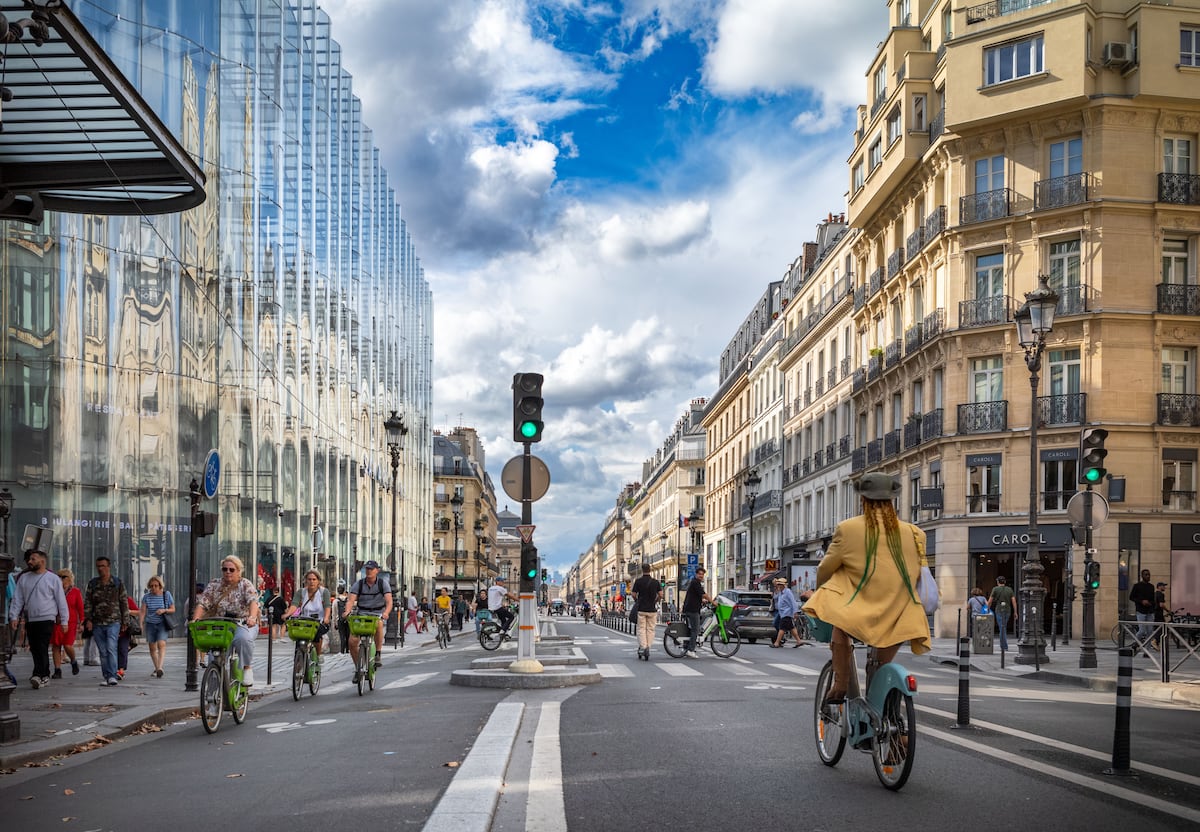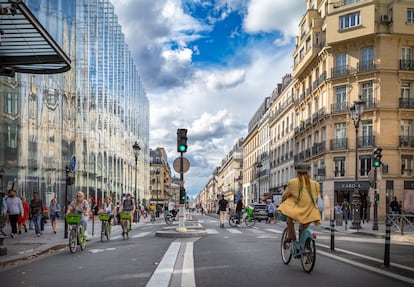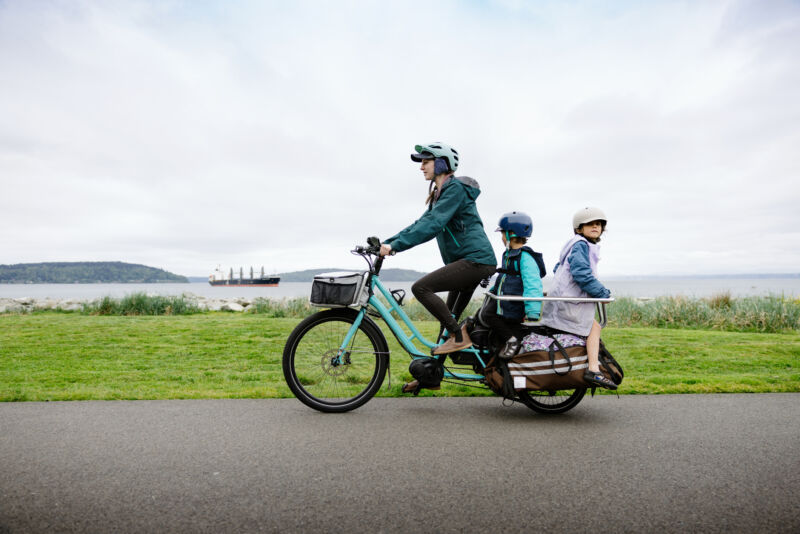I’m about to go for a ride now.Good to be back outdoors

However this bike is old and I might give it to my brother.
Should I cop a Trek bike next or a Giant?

What do y’all recommend?
I’m about to go for a ride now.Good to be back outdoors



NASA-inspired airless bicycle tires are now available for purchase
Two years ago, we heard how the Ohio-based Smart Tire Company was developing shape memory airless bicycle tires. Well, the resulting Metl tires can now be purchased via – you guessed it – a Kickstarter campaign.newatlas.com
NASA-inspired airless bicycle tires are now available for purchase
By Ben Coxworth
September 13, 2023

The Metl road/gravel tire, pictured here without its replaceable tread
Smart Tire Company
Two years ago, we heard how the Ohio-based Smart Tire Company was developing shape memory airless bicycle tires. Well, the resulting Metl tires can now be purchased via – you guessed it – a Kickstarter campaign.
The never-go-flat tires were created in partnership with NASA, which had already applied the same technology to tires for its planetary rover vehicles ... after all, it would be pretty difficult to fix a flat on the surface of the Moon or Mars. And no, they're not literally airless. They're hollow – so they have air in them – that air just isn't pressurized, nor is it required for the tire to hold its shape.
At the heart of each Metl tire is a Slinky-like spring that runs all the way around the tire. That spring is made of a shape memory nickel-titanium alloy known as NiTinol, which is described as being strong like titanium yet also stretchy like rubber.
Importantly, when NiTinol is placed under pressure, it initially deforms but then goes back to its original shape. This characteristic allows the Metl tire to gently compress and rebound, providing a smooth ride just like a pneumatic tire.
The spring is encased in a poly-rubber material which forms the tire's transparent sidewalls and replaceable tread. According to the company, this setup incorporates only half as much rubber as a regular tire. Additionally, while the tread may have to be replaced roughly every 5,000 to 8,000 miles (8,047 to 12,875 km), the main tire should reportedly last for the life of the bike.

The Metl tire can be mounted on conventional rims Smart Tire Company
For this commercial introduction of the technology, the Smart Tire Company is offering a road/gravel tire in size choices of 700 x 32c, 35c and 38c. The 35c model is claimed to weigh 450 grams (16 oz), which is around the middle of the weight range for comparable pneumatic tires.
And we're told that while this first version of the tire will be of a fixed firmness, future models may allow users to increase the firmness by pumping in more air. So they'll be semi-pneumatic, but they will still never go completely flat.
Assuming the Metl tires reach production, a pledge of US$500 will get you a set of two – getting them retreaded should cost about $10. Complete aluminum or carbon fiber Metl-clad wheelsets are also available for pledges of $1,300 and $2,300, respectively. Potential backers should note, estimated delivery isn't until next June.
Sources: Kickstarter, Smart Tire Company

Bike tires made from NASA’s bizarre shape-shifting metal are now available to buy
No more bicycle flats, forever.www.theverge.com
Bike tires made from NASA’s bizarre shape-shifting metal are now available to buy
/
These airless Metl tires are made from nitinol, a shape-memory alloy that ‘stretches like rubber but is strong like titanium.’ Warning: Kickstarter.
By Thomas Ricker, a deputy editor and Verge co-founder with a passion for human-centric cities, e-bikes, and life as a digital nomad. He’s been a tech journalist for almost 20 years.
Sep 14, 2023, 7:10 AM EDT
If you buy something from a Verge link, Vox Media may earn a commission. See our ethics statement.
:format(webp)/cdn.vox-cdn.com/uploads/chorus_asset/file/24920809/STC_GreenTire1.png)
A green prototype of the METL tire with the tread applied. You can see the coil of nitinol through the transparent tire. Image: The Smart Tire Company
The Metl bicycle tire is the first consumer product we’re aware of to use nitinol, a NASA-developed shape-memory alloy made of nickel and titanium that can be trained with heat to remember its shape. Compared with traditional bicycle tires, Metl tires will never go flat and will last a lifetime — at least that’s the promise made by The Smart Tire Company, the former Shark Tank contestants now hailing from Akron, Ohio, which is also home to the Goodyear Tire and Rubber Company.
Just be careful: the tires are being sold via a crowdfunded campaign on Kickstarter and that brings along risk, which I’d rate as high for something as cutting edge as this from a small startup.
You’re also looking at a pledge of $500 for a pair of blue or clear Metl tires (weighing 450g with an equivalent size of 700x35c) that are “DIY easy install” onto most common road or gravel bike rims. That’s about 10x the price of good bicycle tires, with prices exceeding $1,300 when opting for a pre-assembled bundle that includes aluminum rims, or $2,300 if you prefer carbon rims.
Here’s a Verge video that provides a deeper dive into nitinol and its NASA origins (and future):
Despite their memory-metal construction, the tires do provide grip thanks to an integrated all-weather tread that offers “medium low” rolling resistance, according to the campaign. The tread is rated for up to 8,000 miles with retreads priced at $10 per tire. The Metl bicycle tires are said to offer a “lightweight, smooth ride, with superior handling and durability” that can also “increase traction” compared to typical air-filled tires.
Estimated delivery of the Metl bicycle tires is listed as June 2024. As of right now, the campaign already has 128 backers, earning triple its goal with 28 days still to go. Stretch goals (if the campaign earns enough) include making wider Metl tires for e-bikes and mountain bikes, and more road/gravel sizes and tread patterns.
Trek, Giant, Specialized are good brands that you can buy locally and have bike shop support. I have a Canyon. They are direct-to-consumer, no local support, but offer the best value.I’m about to go for a ride now.
However this bike is old and I might give it to my brother.
Should I cop a Trek bike next or a Giant?
What do y’all recommend?
Okay cool. Thanks.Trek, Giant, Specialized are good brands that you can buy locally and have bike shop support. I have a Canyon. They are direct-to-consumer, no local support, but offer the best value.

 www.forbes.com
www.forbes.com








 www.threads.net
www.threads.net
